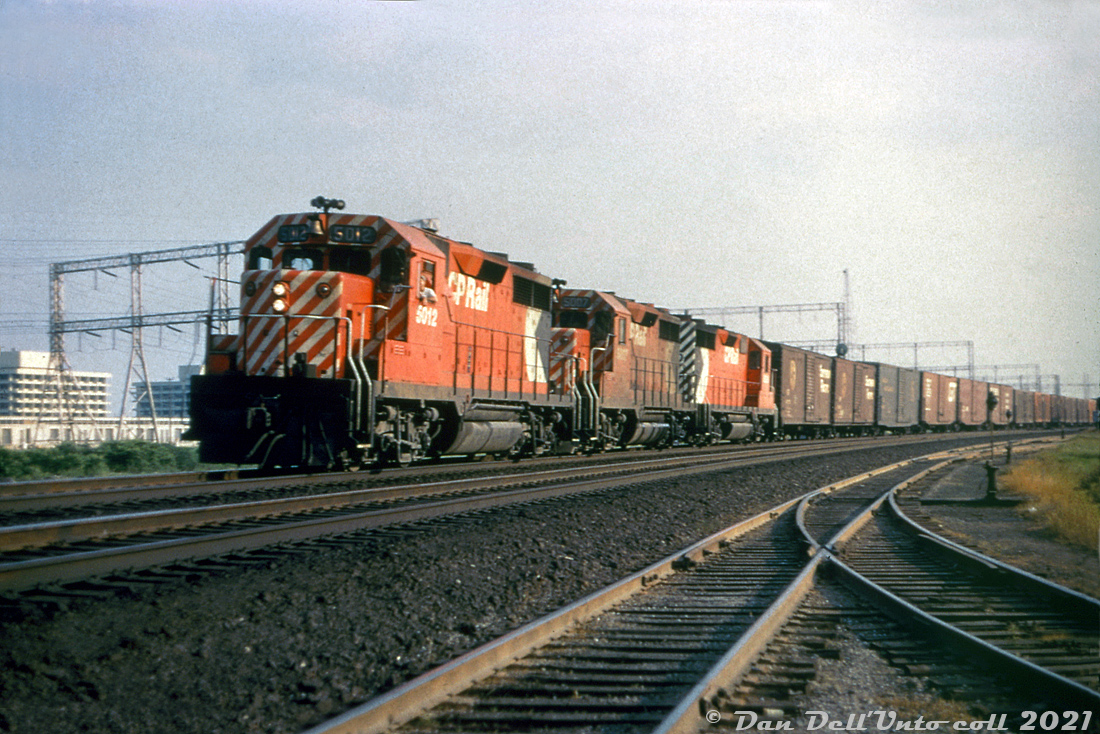|
Caption: CP Rail GP35's 5012, 5007 and another 5000-series sister unit (either 5010 or 5020) roll an easbound freight along the Belleville Sub through the Leaside area of Toronto, passing by industrial leads and sidings at the east end of the yard. All three sport the new CP Rail branding, including action red paint, 5" end striping and "multimark" logos introduced two years later in 1968 (but repaints didn't generally start until mid-1969). Long an industrial center in the city, today in Leaside most if not all of the rail customers are gone, and the industrial leads and sidings have all been pulled up. What remains of Leaside Yard is a shadow of its former self.
The 2,500 horsepower GP35 model was the next iteration of EMD/GMD's mid-1960's second generation 4-axle diesel road unit after the GP30, and designed to compete with the likes of GE's U25B and Alco's C424/425 offerings. It sold quite well to US buyers, although Canadian buyers had relatively newer fleets at the time so didn't purchase all that many: CP went in for two GP30's, and three subsequent GP35 orders (that only amounted to 24 units total). Some were purchased new, others were purchased through EMD/GMD's trade-in program using old or wrecked power such as GP7's, FP7's, F7B's, etc and some components from them were reused. CN only purchased two GP35's and followed up with 15 GP40's, and later many many more GP40-2L/W units.
The GP35 model wasn't favoured by CP motive power officials, as problems cropped up with them over time and GM was reportedly resistant to working on fixes. More complex transition and wheel slip systems, more DC brushes to change in the main generators, and reliability issues (many argue the 567-block was being was being pushed to its limits by then at 2500 horsepower) didn't play in their favour, and CP de-rated them down to 2250hp at one point. Years later when they were assigned out west, a few Port Coquitlam shop employees took them under their wing and worked out many of the bugs, improving performance. Most were retired and sold off in the 90's, with a few becoming cab control units 1125-1128 (some still on the roster today) paired with GP38-2's.
Original photographer unknown, Dan Dell'Unto collection slide (duplicate)
|



Trains of box cars are the best, the way switches should look with a lantern on top and wow, both tracks are CWR already in 1970. Nice find Mr.Dan.
Great photo! Classic curve shot with classic diesel power…!